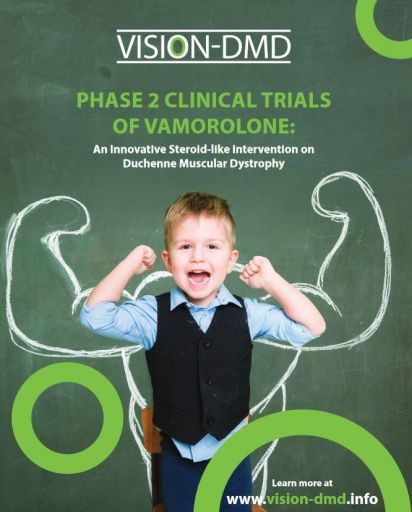OUR MEDICINES
AGAMREE® (vamorolone)
AGAMREE (vamorolone) is a first-in-class drug candidate that binds to the same receptors as corticosteroids but modifies the downstream activity of the receptors1,2. This has the potential to ‘dissociate’ efficacy from typical steroid safety concerns and therefore could emerge as a valuable alternative to corticosteroids, the current standard of care in children and adolescent patients with DMD. There is a clear unmet medical need in this patient group as high dose corticosteroids have significant systemic side effects that detract from patient quality of life.
Santhera has an exclusive license to vamorolone from ReveraGen for all indications worldwide. The Company has out-licensed rights to vamorolone for North America to Catalyst Pharmaceuticals and for China to Sperogenix Therapeutics.
AGAMREE for the treatment of DMD is approved in the U.S. by the Food and Drug Administration (FDA), in the EU by the European Medicines Agency (EMA), and in the UK by the Medicines and Healthcare products Regulatory Agency (MHRA).
Applicable drug labeling: view the EU-approved Summary of Product Characteristics (SmPC) here.
Vamorolone in clinical studies
Vamorolone has been developed by US-based ReveraGen BioPharma Inc. with participation in funding and design of studies by several international non-profit foundations, the US National Institutes of Health, the US Department of Defense and the European Commission’s Horizon 2020 program. For more information about the vamorolone and the development program click here.
The clinical development program with vamorolone in patients with DMD was initiated following a clinical pharmacology study (VBP15-001, clinicaltrials.gov NCT02415439) in healthy volunteers in which biomarker assessments indicated reduced occurrence of side effects typical for traditional corticosteroid drugs like bone fragility, metabolic disturbance, immune suppression3.
The Phase 2a program with vamorolone consisted of two studies that were conducted back-to-back in 48 boys with DMD aged 4 to <7 years (VBP15-002; clinicaltrials.gov NCT02760264 and VBP15-003 clinicaltrials.gov NCT02760277). These studies with a combined duration of 6 months investigated the efficacy, safety and tolerability of oral administration of vamorolone at doses of 0.25, 0.75, 2.0 and 6.0 mg/kg/day (12 boys per treatment group). Data from these studies reported that vamorolone was safe and well tolerated and over a period of 6 months with dose- and time-related improvements in various timed function tests and motor function outcomes 4, 5. Vamorolone treatment led to increased serum levels of osteocalcin, a biomarker of bone formation, suggesting possible reduction of bone morbidities typically associated with corticosteroids. Biomarker outcomes for adrenal suppression and insulin resistance also indicated better tolerability of vamorolone treatment, relative to published studies of corticosteroid therapy.
Patients completing VBP15-003 study were offered continued treatment with vamorolone under the 24-month long-term open-label extension study (VBP15-LTE) which has now been successfully completed.
VISION-DMD was a Phase 2b study (VBP15-004; clinicaltrials.gov id NCT03439670) comprising a (1) pivotal double-blind 24-week period to demonstrate efficacy and safety of vamorolone (2 and 6 mg/kg/day) versus placebo and prednisone (0.75 mg/kg/day), followed by a (2) 24-week period to evaluate the maintenance of efficacy and collect additional longer-term safety and tolerability data. 121 ambulant boys aged 4 to <7 years with Duchenne muscular dystrophy (DMD) were included in the study. The trial met its primary endpoint of superiority in change of time to stand from supine position (TTSTAND) velocity with vamorolone 6 mg/kg/day versus placebo (p=0.002) at 24 weeks (period 1). Vamorolone 6 mg/kg/day also met its secondary efficacy endpoints and no statistically significant differences were observed between vamorolone and prednisone. During the second 24-week period of this 48-week study, all participants received vamorolone. Participants from the placebo and prednisone arms were randomized to either the 2 or 6 mg/kg/day dose of vamorolone and the vamorolone arms continued on their existing dose. Efficacy observed at 24 weeks for vamorolone 6 mg/kg/day was maintained across multiple endpoints over 48 weeks. In addition to efficacy, the study aimed to confirm the favorable tolerability profile of vamorolone with the potential to offer an alternative to current standard of care.
In clinical studies, vamorolone was generally well tolerated. The most commonly reported adverse events versus placebo from the VISION-DMD study were cushingoid features, vomiting and vitamin D deficiency. Adverse events were generally of mild to moderate severity.

Vamorolone has been granted Orphan Drug status in the US and in Europe for DMD, and has received Fast Track and Rare Pediatric Disease designations by the US FDA and Promising Innovative Medicine (PIM) status from the UK MHRA for DMD.
References
to provide physicians with
information about AGAMREE® and other
products in Santhera’s pipeline.
I am a physician
I am not a physician